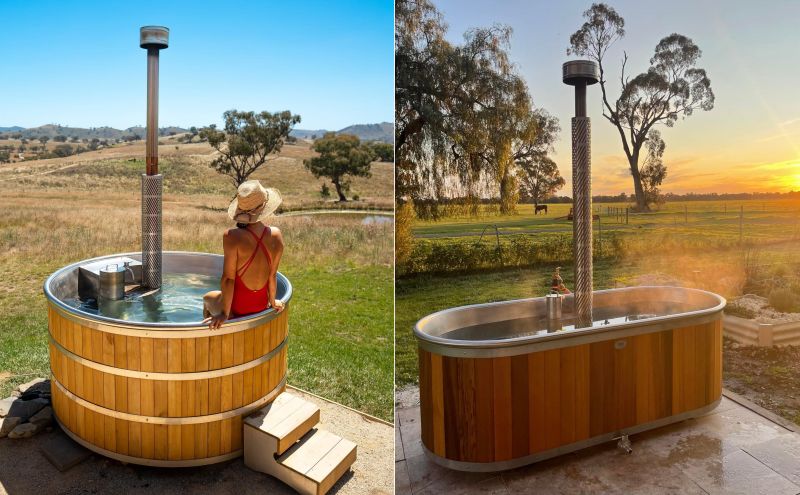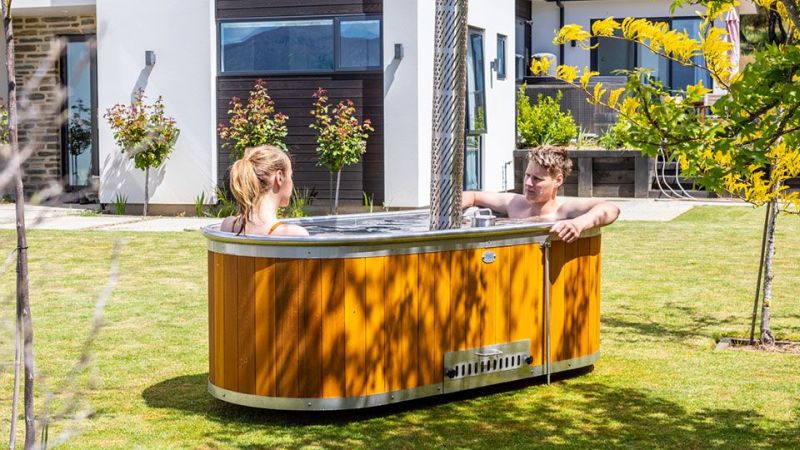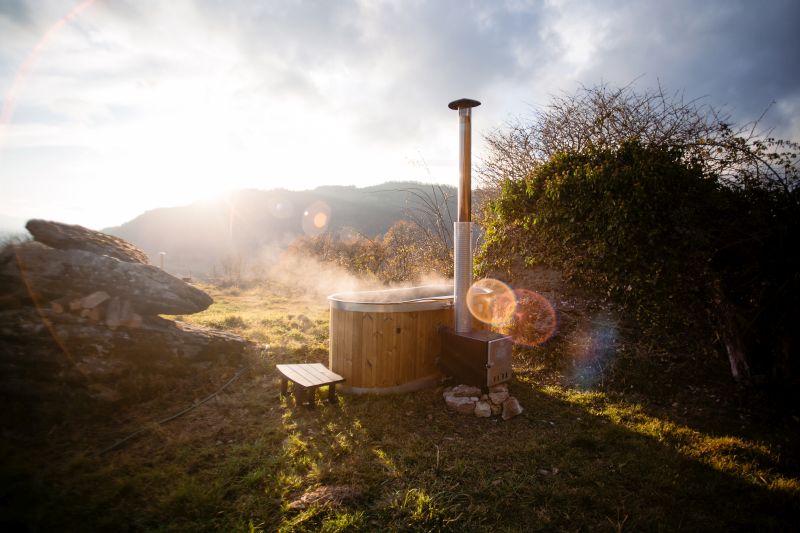In today’s fast-paced world, we face a number of stressors; these can mainly be categorized as work, relationship, or money related . All these factors that cause stress are often beyond our control. The best we can do to relieve the stress is to wait and relax in a calming environment. When thinking of deep relaxation, nothing compares to soaking in a traditional wood-fired hot tub.
If you are looking for convenience, there are various electric or gas-powered hot tubs available in the market but where’s the fun in that? The wood-fired hot tub is a more relaxing but demanding option; it involves you to keep fueling it with firewood to maintain water temperature.
No matter how your perceive it, a wood-burning hot tub adds warmth and character to your garden (or where you intend to place it) and also takes away the stress of a hard day at work as you soak your troubles in it. Understanding the goodness of the wood burning bath tub, here we delve into the aspects of owning, maintaining, and enjoying all the benefits of a wood-fired hot tub.
What is a wood-fired hot tub?
As the name implies, a wood-fired hot tub uses wood as fuel. There is an onboard stove/furnace where you make a fire and feed it wood and logs in order to heat up the water-filled inside the tub.

Usualy a hot tub with wood stove is made in a barrel or round shape, chiefly employing wood and steel in its construction. It generally takes an hour or two to heat up the water in summer, and three to four hours in the cold winter months.
How does a wood fired hot tub work?
A wood-fired hot tub works using heat generated from fire in the stove. Before we discuss the functionality, we need to understand the types of wood-burning stoves for hot tubs. There are mainly two different types of wood stoves for hot tubs.

- The internal heater is submersed in the tub which means it is more efficient. It is often submerged in the water and heats up water directly.
- The other type of wood stove heater is located outside the tub and connects to the tub by pipes. Some manufacturers, such as Stoked Stainless also offer cedar hot tubs where the stove is integrated within the tub itself. Cold water comes to the heater and is heated via convection.
You can control the temperature of a wood-burning hot tub by regulating its air circulation. For instance, you can close the chimney or vent to limit air circulation if the heat is too much. It’ll slow down how the firewood burns. As a result, the heat from the fire will be reduced.

Also Read: Freestanding vs Built-in Bathtub: Which one to Choose?
Advantages of a wood-fired hot tub
- A wood-fired hot tub takes lesser time to heat up. It takes an average of two hours to take temprature to 100 degrees while an electric hot tub takes 4-15 hours
- Over time, a wood-fired hot tub will be more economical because it doesn’t need electricity to operate
- You can place a wood-fired hot tub anywhere as it doesn’t need a power plug like an electronic hot tub
Disadvantages of a wood-fired hot tub
- It is difficult to regulate the temperature of a wood-fired hot tub
- An external stove powering the tub means the occupant with need to get out of the tub to refuel
- It is a tedious task to cut, arrange or buy firewood
- The use and cost of the wood-fired hot tub will wary depending on the availability and price of firewood in your area
What to consider before buying a wood-burning hot tub
If you’re looking to get a wood-fired hot tub, here are some of the things you should consider before making the last decision:
Size of your home and family
Wood-fired hot tubs come in various sizes and the size you need to get depends on two things: the home’s size and the number of family members. For example, if you have a big-sized family, it would be best to have a big hot tub that everyone can fit in. Ideally, you should consider a big tub if you have ample space around your home.
Wood availability
Since these soaking tubs depend on firewood for heating water, it is ideal to ensure you have access to firewood before getting one. If you’re living in an area where you can easily source wood, you can proceed to buy straightaway. On the other hand, if you don’t have access to wood in your area, you can purchase firewood from nearby shops.
When purchasing wood, buying in bulk is economical because you’ll spend less on delivery fees. And sometimes, you can get a discount if you’re lucky enough. But before you buy firewood in bulk, make sure you have enough storage space at home.
Heat retention
To maintain and avoid heat loss, especially in winter, you will need to keep a low fire going on in order to ensure the stove continuously produces a minimum amount of heat. This will help the tub retain the temperature. Heat retention also depends on the material the hot tub is made of. You can also make use a cover for the tub to avoid heat loss.
Safety measures
- The wood-fired hot tub should be compliant with HSG282 guidelines that include quarterly legionella tests and monthly biological tests
- Before getting into a wood-burning hot tub, you should check the temperature to ensure safety
- Also, keep in mind the temperature of the tub on the outside, it can be really hot and cause burns
- Tubs with external stoves are considered risky as children can get burned playing around them
- Don’t stay too long in the water
Summing it up
Relaxing helps ease stress. One good way to relax your body is by soaking yourself in a hot tub. Here we have tried to focus on wood-fired hot tubs and the things to consider before buying one. It would be better to understand how a wood-burning hot tub works before purchasing one.


